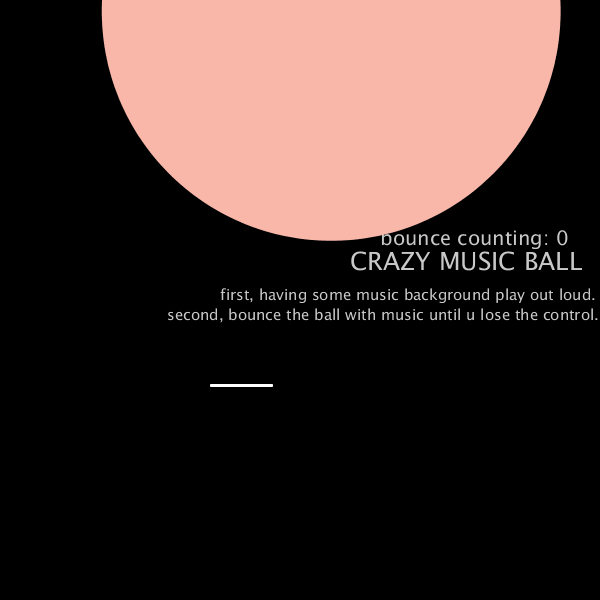Grace C. Hertlein, professor at California State University, is a famous computer artist. She started her work in the mid-1940s and had her first exhibition, at the “Fall Joint Computer Conference”, in 1969. She has her unique understanding toward computer art. In her report, she listed 13 examples of new computer art approaches and styles. Unlike Molnar and Nees, her computer artwork is no way near geographic style. Instead of the neatness and order, the representational sign of computer artwork, Hertlein’s artworks are full of sketchy lines, organic elements, and natural themes. Just like what she wrote, “distortion algorithms are applied to static-looking designs, resulting in feelings of energy and tension”
To be honest, the respond to Hertlein is the most challenging one I did among all the responses. At the first touch of code, the results are unpredictable. There are always some unexpected errors or shape coming out. After a few times of experimenting, I finally figured out some patterns to play with it. As long as I understand some basic rules, the creation process, mimicking Hertlein’s style, becomes intriguing. I use the flower as the theme of this response and the result comes out satisfying.



The coding strategy and logic can be quite difficult. For example, there are 4 groups of lines rotating in the second piece to create a sunflower. For the petals, there is a long pale yellow line at the bottom, giving the base color, while a short black line on the top to create transparency and moving rhythm. For the bud, similarly, there are the dark yellow lines for the base color and the black short lines for texture. Not only complicated elements, the time frame that controls how fast the computer draws also matter. A really fast pace of drawing will miss the perfect stage of the flower, coming out some sketchy geometric patterns instead of the flower. Similar to other pieces, it takes time to wait and catch the best time to take a screenshot of the flower. Also, I used some color schemes to make the artificial flower more flower-like. I love using black backgrounds and colored lines on the top. It creates more visual contrasts and emphasizes.
All in all, it is truly challenging to respond to Hertlein. However, I enjoyed this process the most. The texture and the pattern of Hertlein style prove that computer art can have a totally different style than traditional computer art, the stereotypical style that the majority hold toward computer art. There is the stereotype that computer art always looks neat and controlled carefully with geometric shapes. Even there are randomness and noises, the variation still follows a certain rectangular pattern to some extent. However, Hertlein’s style overthrow this stereotype: computer art can be “organic”, using inspiration from nature and mix it with abstraction. Although the final artwork is still not looking close enough to “handmade”, the repetition and the randomness give a natural sketchy look. Most importantly, as Molnar and Nees, Hertlein reveals her own interpretation of the unique beauty of computer art.


